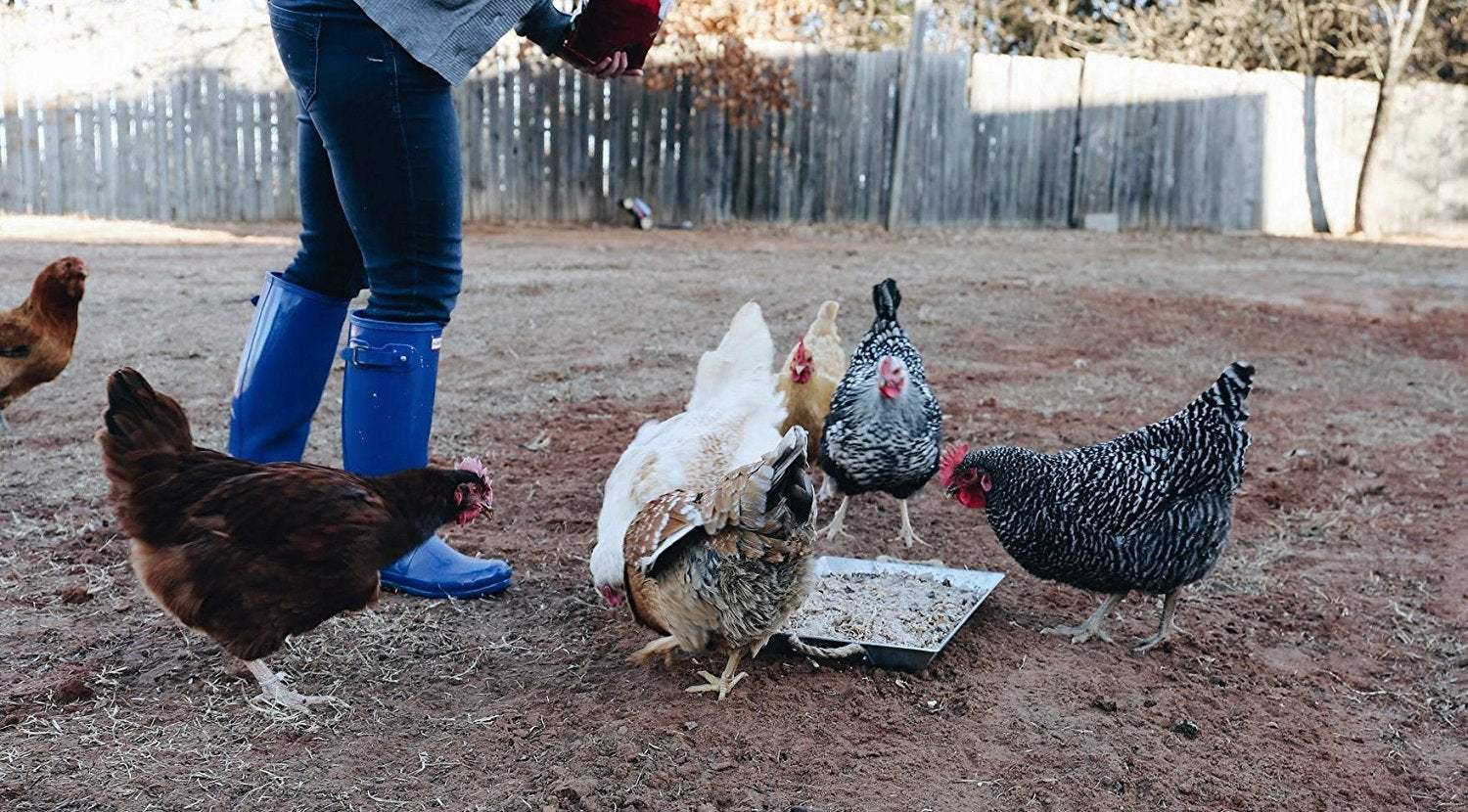How to care for chickens with lime

Note: Years of anecdotal evidence from around the world support that in small amounts, First Saturday Lime’s formula is safe for your animal to ingest. How much? Don’t set a bowl of it next to their food but don’t be afraid if some is left over after the applications listed below.
How
- how to control moss and algae in water pans.
- how to get healthier, harder eggs.
- how to give your chickens a dust bath they’ll love.
- how to clean chick bedding.
- how to whitewash the inside of your chickens’ coop.
How to control moss and algae in water pans
Learn how to The American Association of Poultry attests, a critical “prime” element of poultry health is clean water that’s free of microbial contamination – especially because they consume water at twice the level of feed. Cleaning their water fresh is critical to avoid from potentially dangerous algae and bacteria. Help protect their health and avoid that layer of scum like slime that thrives in direct sunlight and heat and forms in poultry water plans. First Saturday is a safe and effective way to promote clean, healthy, pest-free, and odor free water for your chickens. Note: In general, clean the water frequently to keep the water fresh.
What You'll Need
- 1 water pan
- First Saturday Lime
- fresh water
Directions
- Clean your water pan thoroughly with clean water.
- Fill the water pan with fresh drinking water.
- Pour a thin layer of First Saturday Lime over the surface of the water pan.
KEY TIP: For best results, repeat this process once a month or as needed.
How to get healthier, harder chicken eggs
Without the right amount of calcium, chickens, hens and their eggs suffer. The shell of each egg is made up of nearly 97% calcium carbonate by dry weight. A standard-sized egg requires 2.3g of elemental calcium to produce an eggshell, which represents about 10% of the total calcium present in the skeleton of the hen. A study by the Department of Agricultural, Food and Nutritional Science, confirms calcium should be provided to birds of all ages, even when not laying, as it is vital for bone development. For chicks to deliver healthy, hard eggs without hurting themselves it’s essential they consume at least 4g of calcium per day.
What You'll Need
- First Saturday Lime
- Fresh clean water
Directions
- Clean your water trough and add fresh, clean water.
- Add a 1/8" layer of FSL evenly to the surface of the water.
KEY TIP: R eapply whe never you replace your chickens water.
Give your chickens a dust bath they'll love
- protection against poultry diseases (Avian influenza, Newcastle disease, Ornithosis and more)
- reduce odors
- repel pests that carry disease
- dry out most bug larvae (stick fleas, lice, mites)
- improve calcium levels critical for a healthy flock
- reduce moisture and discourages the growth of potentially harmful bacteria
What You’ll Need
- 1 cup First Saturday Lime
- 1 cup wood ash
- 1 cup sand
- 1 cup soil
Directions
- Mix all ingredients together
- Let the chickens play. Easy!
- For best results, reapply monthly or as needed
KEY TIP: Whitewash is water-soluble so reapplication will be needed as it comes off (depending on weather elements and exposure to water or other fluids).
An easy awesome way to clean chick bedding
- Keep away insects
- Deodorize
- Absorb moisture
- Eliminate bacteria
- Neutralize acid from urine
What You'll Need
- First Saturday Lime
- Broom
- Clean chicken bedding
Directions
- Remove old bedding materials.
- Thoroughly sweep and clean the bedding area.
- Lay down new bedding.
- Sprinkle thin layer of First Saturday Lime on the surface of the new, clean bedding.
Key Tip: For a clean coop, repeat Steps 1-3 once a month. For additional tips on how to keep your poultry healthy, visit our chicken learning center by clicking here.
How to whitewash the inside of your chickens’ coop
Amish whitewash is an old technique used to protect chicken coops from insects. It adds a bit of old-fashion charm while being safe and free of dangerous toxins in paint. Whitewashing has some antibacterial properties against bacteria and pests for those tough-to-wash surfaces. Whitewashing should be done only to the inside of the shelter. Benefits of this technique include:
- reduces odors
- repels pests that can carry disease
- protects against most bug larvae (stick fleas, lice, mites)
- improves calcium levels critical for a healthy flock
- reduces moisture and discourages the growth of potentially harmful bacteria
What You’ll Need
- 8 cups First Saturday Lime
- 2 cups salt
- 1 gallon of water
- 1 paint brush
Directions
- Combine First Saturday Lime and salt together in a bucket or large open container.
- Gradually add water and stir the mixture.
- Remove everything and thoroughly clean the inside of the coop.
- Apply first layer with a paint brush to the inside of the coop.
- Allow to dry completely.
- After the first layer, has dried, apply a second layer and allow to dry completely.
- Once the whitewash has completely dried, allow chickens to enjoy their comfy home.


